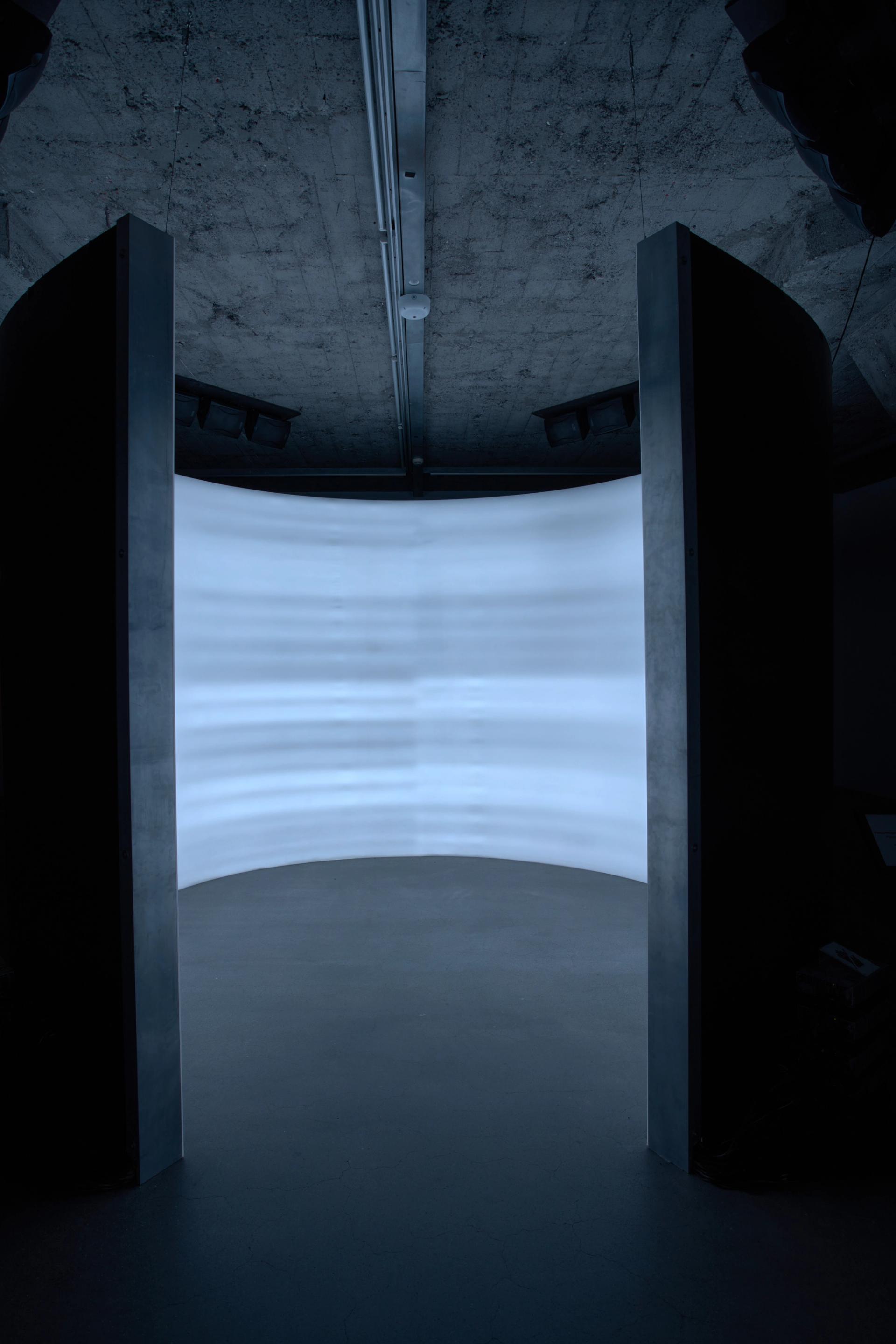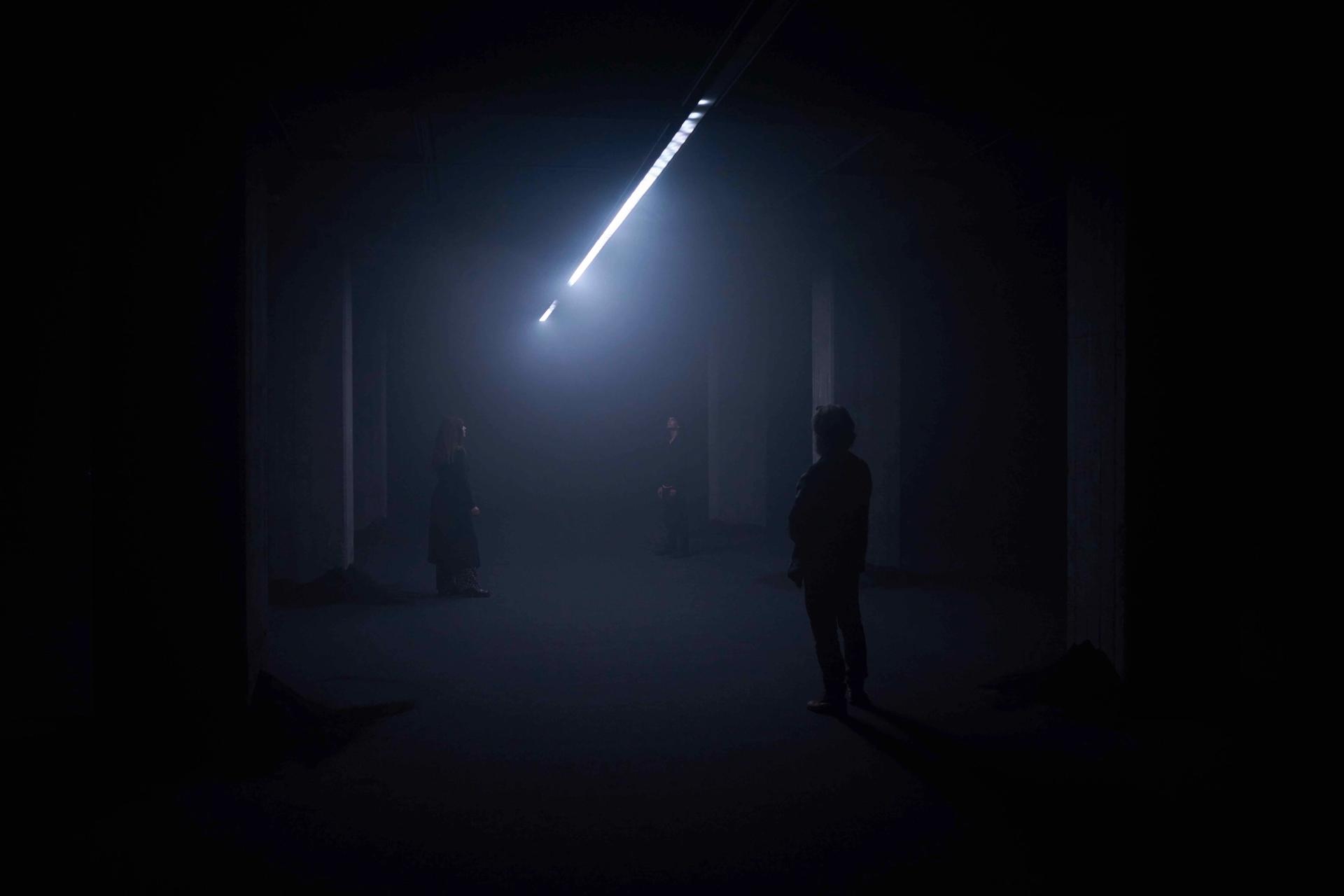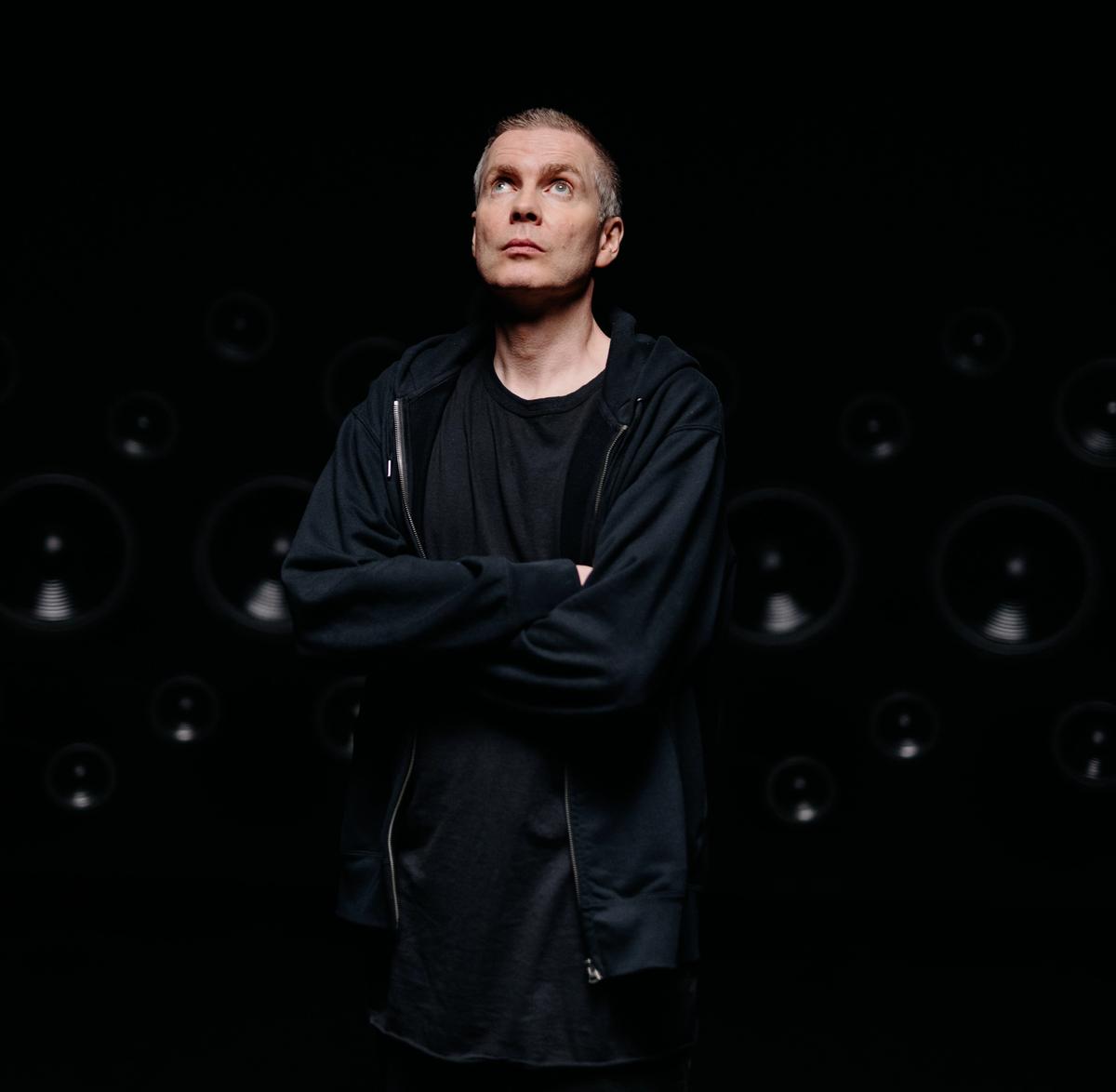When it comes to putting new work out in the world, you’d be forgiven for thinking that little could faze Jónsi, who has fronted the legendary post-rock band Sigur Rós for the past three decades. But his latest project is no ordinary creative exercise. Not only is it the singer’s latest outing as a visual artist—a career he has been experimenting with independently for just five years—it is also his first solo show in Europe. And what’s more, it’s in Iceland, his home country and the place in which so much of his inspiration, community and emotions are rooted.
“It’s stressful, it’s hard,” he says, speaking a few hours before the show opens, final touches being made to the installations around him in the Reykjavik Art Museum. “Every piece is pretty ambitious, and we have to build everything.” Also on his mind is the audience. “I know the art scene here is going to be a little bit critical and like, ‘Why’s this fucking rock and roller dude trying to be an artist?’”
Yet in truth, this is not just any rock and roller: Jónsi’s work has long been more than adjacent to fine art. With Sigur Rós, he has made expansive, elegiac music that, like much contemporary performance, emphasises spectator feeling over interpretation. (Many of the band’s lyrics are even written in “Vonlenska”, or “Hopelandic” in English, a made-up language that mimics the phonology of Icelandic.) Separately, meanwhile, Jónsi has been part of a visual art-focused duo with his former partner, Alex Somers, and collaborated with artists such as Doug Aitken and Olafur Eliasson.
It was Eliasson who encouraged Jónsi to take his first major strides in the international art world, the pair working together on the soundscape for the piece Reality Projector in early 2018. Soon after, he was introduced to Tanya Bonakdar, now his gallerist, and has since 2019 been making his own complex, multi-sensory works—often bringing together sound, sight and smell to evoke a particular place or theme.

REK (Plate Tectonics) comprises six hand-rusted steel sheets hung from the ceiling, each with a speaker behind it playing out a soundtrack at varying frequencies
Photo: Reykjavík Art Museum / Vigfús Birgisson
The Reykjavik show is his most ambitious yet in this trajectory. Among the four installations, three of them brand new, is REK (Plate Tectonics). Like much of his output, it references Iceland, namely its volcanoes and the shifting tectonic plates that set them off. The work comprises six hand-rusted steel sheets hung from the ceiling, their earth-toned surfaces shimmering like Mark Rothko paintings. Behind them are 3D-printed speakers, with an ambient soundtrack—formed out of layers of Jónsi‘s vocals—playing out at varying frequencies, causing the sheets to visibly tremble.
A real-life volcano is erupting at Sýlingafell, on the Reykjanes peninsula, as this interview takes place, and Jónsi is excited by what he describes as the “perfect timing”. He was disappointed to miss a seismic eruption at the Fagradalsfjall volcano in 2021, because of Covid-19 restrictions, and this time is making sure to seize the moment. “I’m here and after this fucking opening’s done, I’m gonna go right up there,” he says.
An adjacent piece nods to a less explosive aspect of Icelandic culture: the country’s incredibly short daylight hours in winter. Living with little sunlight can cause seasonal affective disorder (SAD)—a form of depression brought on by the changing of the seasons—and while Icelanders have been shown to be remarkably resilient to this condition, mental health is still a pressing issue (the country has the highest rate of antidepressant use in the world). Jónsi has created what he describes as possibly the “biggest SAD machine in the world”—a large curving screen that envelops visitors in the light of 60,000 LED lamps, while beautiful harmonies, clicks and scratches call out from the void. Viewers are encouraged to wear sunglasses when inside.

SAD references the treatment for seasonal affective disorder, a form of depression brought on by the changing of the seasons
Photo: Reykjavík Art Museum / Vigfús Birgisson
Jónsi, who has no official musical or artistic training, describes his work as a subject of “endless research”, and the meticulous attention to detail is everywhere. The speakers behind the REK plates, for example, were 3D-printed by a collaborator in Los Angeles, where he is based, “because we couldn’t find a transducer good enough”. His motivations, however, remain the same as they’ve always been. “I’ve always wanted to move people somehow. I don’t know in what way; in any way.”
FLÓÐ (Flood), which has been shown in a different iteration at Seattle’s National Nordic Museum last year, is another work of pure feeling. Visitors enter a dark room to be engulfed by mist and a hard-to-place scent. Above them, a single thin bulb, stretching almost the length of the room, flows light back and forth, while Jónsi’s falsetto voice again echoes through the space, together with rumbling and a sound similar to falling glass. It is reminiscent of the patterns and rhythms of nature but also embodies something deeply unsettling. “It’s depression basically,” Jónsi says. “Like an apocalyptic doom forecast. It’s about the big wave that is gonna come and, you know, just drag us all away.” Moodiness, he says, is important to him. “I'm kind of a drama queen. I want a little bit of drama.”

Jonsi‘s FLÓÐ (Flood), which he describes as “an apocalyptic doom forecast”
Photo: Reykjavík Art Museum / Vigfús Birgisson
Walk out to into the fresh air in front of the museum’s main entrance and—as some visitors may have noticed upon arriving—a symphony carries through the air. Jónsi and his team have installed five piano strings across the exterior wall. A flapping black flag makes clear the force behind the sounds: the Icelandic winds, known to be some of the strongest anywhere. “I was so dumb, I didn’t think it would work,” Jónsi says. “But then it actually made sounds, and it’s happening in real time, which is kind of cool.”
The irrevocable ties Jónsi has forged between his art and his music are perhaps unsurprising, yet he is clear on the differences between the art forms. “Music is more spontaneous, in a way you play and you’re not thinking about it,” he says. “Whereas this is a slower, maturing process.” A gallery, he adds, is wildly different to a concert stage, in that “you can really control every aspect of everything”, rather than reacting largely to the moment.
Jónsi sees himself as largely outside Iceland’s art scene. Speaking to several members of this small community in the run-up to this opening, it is clear that there is a lot of respect for Jónsi both as a musician and as an artist—some knew him growing up and remember seeing small displays of work he made with Somers. But while he in turn greatly admires many of his contemporaries, he sees himself as on his own journey. “I’ve always been a little bit of an outsider; I’m a loner, so I like to be alone.”
This doesn’t stop Jónsi pushing boundaries. Another of his recent passions has been perfume: in 2017, he launched Fischersund, a perfumery in Reykjavik, together with his sisters—all of whom work in the creative industries—and their partners. It hasn’t always been an easy road. “You have to be obsessed with it, and I’m obsessed with it,” he says. “You do hundreds of trials and experiments, and if everything fails, it’s horrible. It’s a love-hate relationship, but it’s more love now actually.” He has created a new fragrance especially for the Reykjavik show, its scent formed using seaweed from the local coastline, along with 30 other aromas.
Unlike his perfume, Jónsi’s fine art practice is not, in its present form, what one would describe as market-minded, and he explains that he has had to finance it largely himself. “I’m just channeling my resources from being in a band for 30 years and the money I’ve gathered from that. I’m definitely not making any money off being an artist.”
Yet he continues—and FLÓÐ is a testament to what feels like growing ambition. Where does he see it all going next? “After I did this I had some pain, I’ve been so stressed,” he says. “I’ve been getting two, three hours of sleep.”
The concept of taking it easy, however, seems to remain something of a pipe dream. “We’re always saying, ‘Oh after this exhibition we just have to do like a small landscape painting.’ Like boop—perfect.”
- Jónsi: FLÓÐ, Reykjavík Art Museum, Hafnarhús, until 22 September


